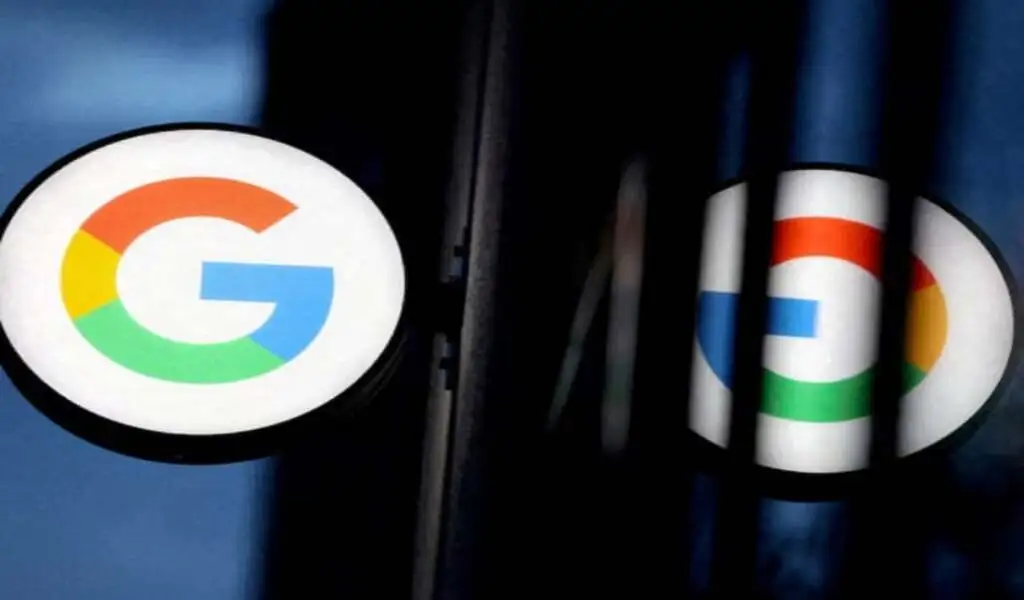Tech
Driving Autonomous Vehicle Tech with Quantum AI

Autonomous vehicle technology has been advancing rapidly in recent years, and one of the most significant drivers of this progress is the integration of Quantum AI. To truly understand the potential impact of this integration, it is essential to first delve into the basics of autonomous vehicle technology.
Understanding the Basics of Autonomous Vehicle Technology
Autonomous vehicles, commonly known as self-driving cars, are vehicles equipped with advanced sensors, cameras, and artificial intelligence algorithms to navigate and operate without human intervention.
These vehicles rely on a complex system of sensors to perceive the surrounding environment, interpret data, and make decisions in real-time.
Over the years, artificial intelligence has played a crucial role in enhancing autonomous vehicle technology. This leads us to explore the connection between artificial intelligence and autonomous vehicles.
Artificial intelligence forms the backbone of autonomous vehicle technology. Machine learning algorithms enable these vehicles to learn from past experiences and improve their decision-making abilities. This includes recognizing objects, interpreting road signs, and responding to various traffic situations.
Another crucial aspect of AI in autonomous vehicles is the ability to predict and adapt to unexpected scenarios. By utilizing deep learning networks, autonomous vehicles can process vast amounts of data and identify patterns to make informed decisions in real-time.
As we move forward, it is important to understand how autonomous vehicle technology has evolved throughout the years.
Autonomous vehicle technology has come a long way since its inception. Early experiments focused on basic navigation and obstacle avoidance. However, with advancements in AI and sensor technologies, the capabilities of autonomous vehicles have rapidly expanded.
The development of advanced mapping systems, such as high-definition maps and real-time updating, has allowed autonomous vehicles to navigate complex environments with precision.
Additionally, the integration of machine vision and sensor fusion technologies has improved their ability to perceive and analyze the surrounding environment.
Nevertheless, the intersection of quantum computing and AI is poised to revolutionize the field of autonomous vehicle technology.
Quantum computing has the potential to significantly enhance the capabilities of autonomous vehicles. With its ability to process vast amounts of data and perform complex calculations at an unprecedented speed, quantum computing can enable autonomous vehicles to make even more precise decisions in real-time.
Furthermore, the integration of quantum computing and AI can lead to the development of more advanced machine learning algorithms. These algorithms can not only improve the decision-making abilities of autonomous vehicles but also enhance their ability to learn and adapt to new situations.
Moreover, quantum computing can also address one of the major challenges in autonomous vehicle technology: the processing of large amounts of data.
With the exponential growth of data generated by autonomous vehicles, traditional computing systems may struggle to handle the sheer volume and complexity of this data.
Quantum computing, with its parallel processing capabilities, can provide a solution to this challenge by significantly speeding up data processing and analysis.
In conclusion, the integration of quantum computing and AI has the potential to revolutionize the field of autonomous vehicle technology. With advancements in both these fields, we can expect autonomous vehicles to become even more intelligent, efficient, and safe in the future.

The Intersection of Quantum Computing and AI
Quantum computing is an emerging technology that utilizes the principles of quantum mechanics to perform complex calculations at an exponential rate. When combined with AI, quantum computing offers a myriad of possibilities for enhancing various applications, including autonomous vehicles.
Defining Quantum Computing
Quantum computing is a paradigm shift from classical computing. Instead of using classical bits, which can represent either a 0 or a 1, quantum computers employ quantum bits or qubits. These qubits can exist in multiple states simultaneously, allowing for parallel processing and advanced computational capabilities.
The inherent parallelism and computational power of quantum computing enable more efficient and faster processing of complex algorithms. This is particularly relevant in the realm of AI, where large datasets and intricate computations are commonplace.
Quantum computing also introduces the concept of entanglement, where qubits become intertwined and share information instantaneously, regardless of the distance between them. This phenomenon opens up new possibilities for communication and information processing, further enhancing the capabilities of AI systems.
How Quantum Computing Enhances AI Capabilities
The integration of quantum computing with AI has the potential to revolutionize various AI applications, including autonomous vehicles. For instance, quantum algorithms can significantly accelerate machine learning tasks, allowing for faster training and improved decision-making abilities in autonomous vehicles.
Furthermore, quantum AI algorithms have the potential to solve optimization problems more efficiently. This can be particularly relevant in route planning for autonomous vehicles, where optimizing travel time and energy consumption are crucial factors.
Quantum computing’s ability to process vast amounts of data simultaneously and explore multiple solutions simultaneously can lead to more optimal and resource-efficient routes for autonomous vehicles.
Additionally, the combination of quantum computing and AI can enhance the capabilities of computer vision systems in autonomous vehicles. Quantum algorithms can enable more accurate and faster object recognition, enabling autonomous vehicles to better perceive and navigate their surroundings.
Moreover, quantum computing can also improve the security and privacy of AI systems. Quantum cryptography algorithms can provide stronger encryption and secure communication channels, protecting sensitive data and preventing unauthorized access.
Now that we understand the intersection of quantum computing and AI, let us explore the potential impact of Quantum AI in autonomous vehicle technology.
Quantum AI in Autonomous Vehicle Technology
The integration of quantum computing with AI can unlock new dimensions for autonomous vehicle technology, transforming how vehicles operate and interact with their environment.
In the cutting-edge arena of autonomous vehicle technology, quantum Ai trading solutions are playing a pivotal role. These solutions harness the immense computing power of quantum AI to process vast amounts of data generated by autonomous vehicles, leading to more efficient and intelligent decision-making processes.
The integration of quantum AI trading solutions is critical in optimizing supply chain logistics, forecasting maintenance needs, and managing the complex data streams that autonomous vehicles rely on for navigation and safety.
By analyzing real-time traffic patterns, weather conditions, and vehicular performance data, quantum AI enables a more dynamic and responsive approach to fleet management and route optimization.
This not only enhances the operational efficiency of autonomous vehicle fleets but also paves the way for more advanced, safe, and sustainable transportation solutions in the future.
The Potential of Quantum AI in Vehicle Autonomy
Quantum AI can enhance the perception and decision-making capabilities of autonomous vehicles. By leveraging quantum machine learning algorithms, these vehicles can process and analyze vast amounts of data more efficiently, making them better equipped to handle complex traffic scenarios.
Furthermore, quantum AI can enable autonomous vehicles to adapt to changing conditions in real-time. The ability to process and analyze data at an unprecedented speed allows for quick decision-making, ensuring the safety and efficiency of autonomous vehicles.
However, integrating Quantum AI into autonomous vehicle technology comes with its own set of challenges.
Challenges and Solutions in Implementing Quantum AI
One of the primary challenges in implementing Quantum AI in autonomous vehicles is the physical realization of quantum computers. Quantum systems are highly sensitive to external disturbances, making them prone to errors and decoherence.
However, advancements in quantum error correction techniques and fault-tolerant quantum systems offer potential solutions to mitigate these challenges. Coupled with the rapid development of quantum hardware, these advancements pave the way for the practical integration of Quantum AI in autonomous vehicles.
Looking towards the future, it is crucial to explore the predicted developments and the impact of Quantum AI on autonomous vehicles.
The Future of Autonomous Vehicles with Quantum AI
The integration of Quantum AI in autonomous vehicle technology holds immense potential for revolutionizing transportation and society as a whole.
Predicted Developments in Quantum AI and Autonomous Vehicles
In the coming years, we can expect the convergence of Quantum AI and autonomous vehicle technology to lead to significant advancements. Quantum computing’s exponential processing power will enable more sophisticated AI algorithms, enhancing the efficiency and safety of autonomous vehicles.
Furthermore, as quantum hardware continues to improve, the deployment of Quantum AI in autonomous vehicles will become more widespread, ultimately leading to fully autonomous and reliable transportation systems.
The Impact on Society and Transportation
The integration of Quantum AI in autonomous vehicles can have a profound impact on society and transportation. With the improved safety and efficiency of self-driving cars, we can envision reduced traffic congestion, improved fuel efficiency, and fewer accidents caused by human error.
Moreover, the implementation of autonomous vehicles powered by Quantum AI can enhance accessibility and mobility for people with disabilities and the elderly, revolutionizing the way we move and travel.
In conclusion, the integration of Quantum AI in autonomous vehicle technology holds immense promise for driving advancements in transportation. As technologies continue to evolve, we stand on the cusp of a transformative era in autonomous vehicle tech, powered by the marriage of quantum computing and artificial intelligence.
SEE ALSO: The Future of Adventure: Exploring With Electric UTVs

Tech
US: A Judge Mandates that Google Allow Competing App Stores to Access Android

(VOR News) – The ruling is that Google, the greatest technology firm in the world, is required to make its Android smartphone operating system available to merchants that supply applications that are in direct rivalry with Google’s. This decision was reached by a judge in the United States of America.
The Android Play store, which is owned and operated by Google, was found to be an example of an illegal monopoly arrangement by a jury in the state of California on Monday. The finding was reached by a jury. Monday is the day that this decision was come to.
An earlier federal judge ruled Google’s search engine illegal.
This finding, which came after that decision, has forced the company to suffer yet another setback. As a result of the corporation having already encountered its initial obstacle, this decision has been established. This particular decision was made by the judge during the month of August, when the month was in progress.
In light of the fact that the decision was made, what exactly does it mean that the choice was accepted?
In accordance with the verdict, Google is obligated to make it possible for users to download Android app stores that are offered by third-party competitors. For a period of three years, the corporation is prohibited from imposing restrictions on the usage of payment mechanisms that are integrated into the application.
In addition, it is important to keep in mind that Google does not possess the right to impose restrictions on the utilization of ways to make payments online.
Additionally, the verdict makes it unlawful for Google to give money to manufacturers of smartphones in order to preinstall its app store. Smartphone manufacturers are prohibited from doing so.
Furthermore, it prevents Google from the possibility of sharing the revenue that is generated by the Play store with other companies that are in the industry of delivering mobile applications.
In addition to this, the court has mandated the establishment of a technical committee that will be made up of three different people chosen at random.
The committee will be responsible for monitoring the implementation of the reforms and finding solutions to any disagreements that may occur as a consequence of the implementation of the reforms while they are being implemented. This task will fall under the committee’s purview so that it may fulfill its duties.
However, certain components were allowed to be put into action until July 1st, despite the fact that the judge’s statement suggested that the ruling would take effect on November 1st. The statement was the basis for the ruling, which ultimately became effective.
Particularly, I wanted to know what Google’s reaction would be.
There is a fact that Google does not adhere to this directive, which has been brought to their attention. This document argued that the alterations that the judge had ordered to be made would “cause a range of unintended consequences that will harm American consumers, developers, and device makers.”
The judge had ordered the modifications to be implemented. The alterations were to be carried out as indicated by the judge’s ruling. The judge made it clear that he expected these revisions to be carried out in accordance with his guidance.
The company’s regulatory affairs vice president, Lee-Anne Mulholland, provided the following statement: “We look forward to continuing to make our case on appeal, and we will continue to advocate for what is best for developers, device manufacturers, and the billions of Android users around the world.”
On average, over seventy percent of the total market for smartphones and other mobile devices is comprised of mobile devices that are powered by the Android operating system. Both smartphones and other small mobile devices are included in this category.
In the event that the Play app store continues to be shown on the home page and that other Google applications are pre-installed prior to the installation of the Android application, smartphone manufacturers are entitled to install the Android application at no cost at their discretion.
Additionally, the Android application can be installed on devices that are manufactured for smartphones.
SOURCE: DWN
SEE ALSO:
Over The Planned “Link Tax” Bill, Google Threatens to Remove NZ News Links.
Tech
WhatsApp Now Features a “Mention” Tool for Status Updates and Stories.

(VOR News) – Those who use WhatsApp now have the ability to mention other people in their stories or status updates as a consequence of a feature that was only recently enabled on the platform.
Previous to this point, this capability was not available. It wasn’t until quite recently that this capability became available to the public.
According to the information that was provided by the company, users now have the opportunity to tag close friends in their stories, and the person who is mentioned will have the option to go back and re-share an earlier version of that story. This information was provided by the company. The corporation was kind enough to reveal this information to us.
Because of a new feature that has been added to the WhatsApp app, users now have the opportunity to like individual stories and status updates.
This capability was previously unavailable to WhatsApp users.
A significant amount of progress has been made in this context. Alternative readers now have the chance to “like” a work, which is comparable to liking a post on Facebook. This feature was introduced in recent years. When compared to the past, this is a tremendous shift.
At one point in time, viewers were only permitted to observe the total number of views that a particular story had gotten. These restrictions were eliminated in later versions of the software.
Additionally, it is essential that the likes and reactions to a story be kept anonymous during the entire process. One of the factors that contributes to the general mystery that surrounds this characteristic is the fact that this is one of the elements.
The person who brought it to the attention of others is the only person who will be able to judge who enjoyed it and who did not care about it. These individuals will be able to make this determination.
A notification will be issued to the individual who was referenced earlier in the sentence and who was named in the story or status update that was discussed. A notification of this nature will be sent to the individual via WhatsApp.
This message will be sent to the user in question whenever that person makes a reference to another person while they are in the process of elaborating on a narrative or updating their status. You will receive a notification alerting you that you have been tagged in the narrative.
This notification will be delivered to the person who receives this message. In addition, students will be provided with the opportunity to re-share the tale for themselves.
It is important to note that if the names of individuals who have been referenced in a narrative or a status update are included in any of these, then the names of those individuals will not be accessible to any third party through any of these. In light of the fact that the identities of those individuals will be concealed from public disclosure, this is the condition that will be required.
While WhatsApp recently made the announcement that it will be incorporating this functionality, it is highly likely that not all users will have access to it at the same time.
This is despite the fact that WhatsApp recently made this announcement.
Despite the fact that WhatsApp has only recently made a public announcement that it will move forward with the deployment, this is the situation that has presented itself.
As soon as a short period of time has elapsed, access will be made available to each and every person on the entire world.
Additionally, WhatsApp has hinted that new functionalities might be introduced to the status and updates tab in the future months.
The purpose of these capabilities is to provide users with assistance in maintaining healthy connections with the individuals who play a vital role in their living experiences. This is done in order to give users with support in maintaining close relationships with the folks who are the subject of the inquiry.
It is with the purpose of supporting users in successfully keeping close ties with the individuals in question that this step is taken.
SOURCE: DN
SEE ALSO:
Over The Planned “Link Tax” Bill, Google Threatens to Remove NZ News Links.
Accenture and NVIDIA Collaborate to Enhance AI Implementation.
Tech
Over The Planned “Link Tax” Bill, Google Threatens to Remove NZ News Links.

(VOR News) – Google has sent a strong message to the New Zealand government, threatening to stop boosting local news content should the Fair Digital News Bargaining Bill become law.
The law, put up by the Labour government and backed by the coalition in power at the moment, mandates that digital companies such as Google pay back news organizations for links to their material.
News publishers, on the other hand, charge the tech giant with “corporate bullying.”
Google says this measure may have unanticipated effects.
Google New Zealand’s country director, Caroline Rainsford, voiced her worries that the law, which is being referred to as a “link tax,” is not doing enough to support the media industry in New Zealand right now.
She underlined that Google would have to make major adjustments if the previously mentioned law were to pass, including cutting off links to news articles from its Search, News, and Discover platforms and cutting off financial ties with regional publications.
According to Rainsford, similar legislation has been proposed and approved in other nations including Australia and Canada, but it has not been proven to be effective there and breaches the principles of the open web.
She drew attention to the fact that smaller media outlets will be most negatively impacted, which will limit their capacity to reach prospective audiences.
Google says its alternative options will protect smaller, local media from negative effects.
Conversely, it conveys apprehension regarding the possible fiscal obligations and vagueness of the legislation, which it feels generates an intolerable level of ambiguity for enterprises functioning within New Zealand.
The New Zealand News Publishers Association (NPA) has reacted to Google’s warnings by alleging that the internet behemoth is using coercive tactics.
They specifically contend that the need for regulation stems from the market distortion that Google and other tech giants have created, which has fueled their expansion into some of the most significant corporations in global history.
The legislation aims to create a more equal framework that media businesses can use to negotiate commercial relationships with technological platforms that profit from their content.
New Zealand Media Editors CEO Michael Boggs stated that he was in favor of the bill, citing the fact that Google now makes a substantial profit from material created by regional publications.
He also emphasized that the use of artificial intelligence by Google—which frequently makes references to news articles without giving credit to the original sources—highlights the significance of enacting legislation.
Paul Goldsmith, the Minister of Media and Communications, has stated that the government is now evaluating various viewpoints and is still in the consultation phase.
He stated that the government and Google have been having continuous talks and will keep up these ongoing discussions.
However, not all political parties accept the validity of the Act.
The ACT Party’s leader, David Seymour, has voiced his displeasure of the proposal, saying that Google is a game the government is “playing chicken” with. He threatened the smaller media companies, saying that they would suffer from worse search engine rankings if the internet giant followed through on its promises.
Seymour contended that it is not the government’s responsibility to shield companies from shifts in the market brought about by consumer preferences.
The things that have happened in other nations are similar to what has happened in New Zealand.
Google has agreements with a number of Australian media firms that are in compliance with its News Media Bargaining Code. These agreements contain provisions that permit an annual cancellation of these agreements.
Due to the government’s decision to exempt Google from the Online News Act, the company has committed to supporting news dissemination by contributing annually to the Canadian journalistic community.
The New Zealand measure is consistent with global approaches aimed at regulating the relationships that exist between technology corporations and media organizations.
It’s hard to say what will happen with the Fair Digital News Bargaining Bill as the discussion goes on. Google and the New Zealand media landscape are preparing for what might be a protracted legal battle.
SOURCE: TET
SEE ALSO:
Accenture and NVIDIA Collaborate to Enhance AI Implementation.
-

 News4 years ago
News4 years agoLet’s Know About Ultra High Net Worth Individual
-
Entertainment2 years ago
Mabelle Prior: The Voice of Hope, Resilience, and Diversity Inspiring Generations
-
News11 years ago
Enviromental Groups Tell Mekong Leaders Lao Dam Evaluation Process Flawed
-

 Health4 years ago
Health4 years agoHow Much Ivermectin Should You Take?
-

 Tech3 years ago
Tech3 years agoTop Forex Brokers of 2023: Reviews and Analysis for Successful Trading
-

 Lifestyles3 years ago
Lifestyles3 years agoAries Soulmate Signs
-

 Entertainment3 years ago
Entertainment3 years agoWhat Should I Do If Disney Plus Keeps Logging Me Out of TV?
-

 Health3 years ago
Health3 years agoCan I Buy Ivermectin Without A Prescription in the USA?